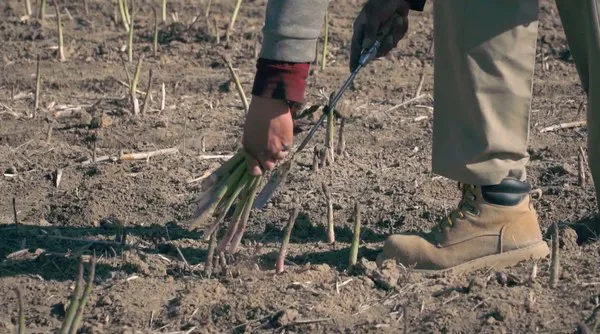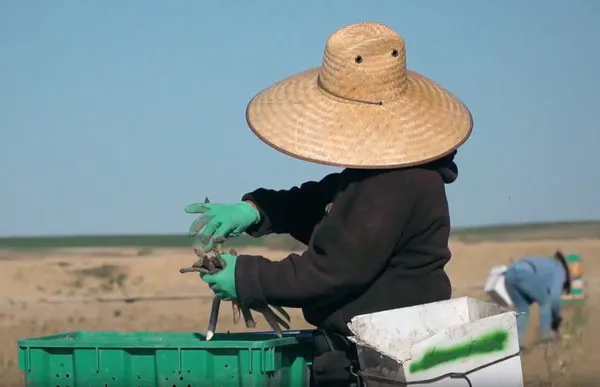The asparagus season in the northwest usually starts mid-April, but this year the crop was almost a month late due to a really cold spring. “When Mexico stopped shipping the third week of April, we weren’t even packing asparagus in Idaho,” says Shay Myers with Owyhee Produce. The late start created a bigger-than-normal gap at the front end of the season, from late April until mid-May. “There was just no product to supply the market,” Myers said. “However, when we came on, volumes ramped up to full capacity quite fast. On the first pick, the volume was about 20 to 30 percent higher than normal and promotable volumes were available quickly.” As a result, the region will be able to partially make up the harvest days it lost at the front end. “While the northwest is 31 percent down on harvest days (25 calendar days), total volume is expected to be only down 20 percent,” Myers commented.
A late start of the season automatically causes a decrease in the number of shipping days as harvest ends mid-June. “Asparagus is a perennial crop that needs time to recoup for next season. If production continues longer, the crop could be damaged for years to come, so no matter what, harvest stops mid-June.”

100% hand harvested
As a result of the gap in the early part of the season, prices were phenomenal. “At the peak, spot prices were in the mid-$60s on 28 lb. standards.” However, there is one big caveat to the high prices in the early part of the season: labor. Asparagus is a very labor-intensive crop and an increase in hourly rates directly correlates with the cost to grow asparagus. “We are using ag H-2A visas for our foreign workers and rates went up almost $1/hour this year,” said Myers. In Idaho, the minimum hourly wage is now $14.55.
“With asparagus being 100 percent hand harvested, this has a huge impact on our bottom line.” In recent years, tens of thousands of acres of asparagus have moved to Mexico and Peru where labor costs are significantly lower. Idaho and Oregon growers have switched to other crops that are less labor-intensive. When asked if Owyhee Produce plans to continue growing asparagus in Idaho and Oregon, Myers said “he doesn’t know yet.”

First domestic spring crop
Demand is usually strong for domestic asparagus. “It’s the first spring crop that’s grown domestically and comes on the market before anything else, which makes people excited.” Domestic asparagus production starts in California’s San Joaquin Valley in early April. Then, it moves on to Washington, Oregon, and Idaho mid to late April before it starts in Michigan and New Jersey. By mid-July, the domestic crop is usually done as it becomes too hot. Although the season will run for another six weeks, imports from Peru are already starting to arrive, which puts pressure on pricing.
 Contact:
Contact:
Shay Myers
Owyhee Produce
Ph: 1-541-610-0410
shay@owyheeproduce.com
www.owyheeproduce.com
